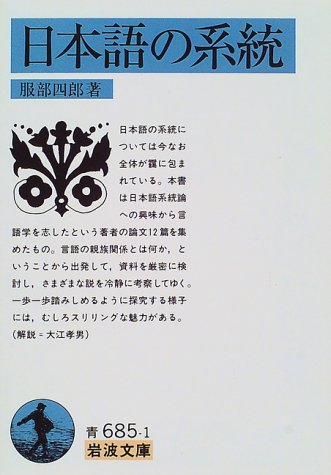1 0 0 0 OA 邪馬台国はどこか (昭和六十一年十一月十二日 提出)
- 著者
- 服部 四郎
- 出版者
- The Japan Academy
- 雑誌
- 日本學士院紀要 (ISSN:03880036)
- 巻号頁・発行日
- vol.42, no.2, pp.93-137, 1987 (Released:2007-06-22)
Firstly, the author agrees with Professor Taro Sakamoto's (M.J.A.) opinion to the effect that the ancestors of the Japanese nation came over to Japan from Siberia via the Mamiya Straits, Sakhalin, and Hokkaido in the early Stone Age. He also approves of Professor T. Sakamoto's theory that Yamatai Queendom was in Kyushu, not in Yamato (Nara Prefecture).The author assumes that the distances described in the so-called Gishi Wajinden are those between the capitals of the kingdoms.The author's hypothetic identification of the capitals of the kingdoms are as follows.Matsura Kingdom: Karatsu City including Sakura-no-baba.Ito Kingdom: Around the Mikumo-Iwara district in Maebaru Town.Fumi Kingdom: Umi City and the adjacent district.As for the capital of Na Kingdom he advances a new theory that it must have been located in the area between Ko-no-su Hills and Mt. Higashi-Abura-yama in Fukuoka City.In regard to Toma Kingdom, the author rejects all the theories advanced so far, and he proposes a new hypothesis that the capital was located around the consecrated spring of Asaduma in Kurume City.The most problematic capital of Yamatai Queendom was located, according to the author, in Kumamoto City.Probably around the end of the 3rd century A.D. it was destroyed to ashes by the Kumaso people (including that of Kuna Kingdom), a branch of the Japanese, who attacked Yamatai Queendom from the south, and the name Yamatai was abolished by them and passed into oblivion.
1 0 0 0 伊波普猷全集
- 著者
- 編集: 服部四郎, 仲宗根政善, 外間守善
- 出版者
- 平凡社
- 巻号頁・発行日
- vol.第2巻, 1974
1 0 0 0 OA 附属語と附属形式
- 著者
- 服部 四郎
- 出版者
- The Linguistic Society of Japan
- 雑誌
- 言語研究 (ISSN:00243914)
- 巻号頁・発行日
- vol.1950, no.15, pp.1-26,103, 1950-04-30 (Released:2010-12-22)
The writer of this article classifies linguistic forms as follows _??_ is definition of various forms is as the following:A form which is never uttered separately (by means of pauses) from other. form (s) is a bound form; all others are free forms. A free form which cannot be uttered alone is a clitic; all others are independent forms.It is sometimes difficult, however, to distinguish clitics bound forms, because clitics are. generally, although not always, uttered jointly with other form (s)The author explains first how to identify various fractions of utterances as the same form. Then he proposes three points..s the criteria to determine whether a form-is a clitic or a bound form.I) If the form in question can be co: ined freely with various independent forms, which belong to different classes because their functions and inflections are different, it, is a free form, i. e. a clitic.2) If other word (s) or phrase (s) can be inserted freely. between two forms united semantically, both of them are free forms Accordingly the form in question is-a. clitic.3) If two forms combined can change their order of combination, the two forms are free forms. The phonological structure of a form cannot be utilised as a criterion, because many clitics have similar structtres to those of bound forms. Of course we cannot depend upon the_meaning, too.It must be noticed, however, that clitics have such phonological‘ structures as can be uttered separately from other forms, and they are very ‘regular’ in relation to the words, with which they enter into close combinations. Ehglish ’-s of the possessive case is a bound form, because it has not such a phonological structure as can be uttered alone. The-e of Latin puellae is a bound form, because i t is not regular. Compare puerT, hostis, cornas, diei.
1 0 0 0 大興安嶺北部の所謂「ヤクート族」
- 著者
- 服部 四郎
- 出版者
- 日本文化人類学会
- 雑誌
- 民族學研究 (ISSN:00215023)
- 巻号頁・発行日
- vol.5, no.2, pp.133-141, 1939-03-30
